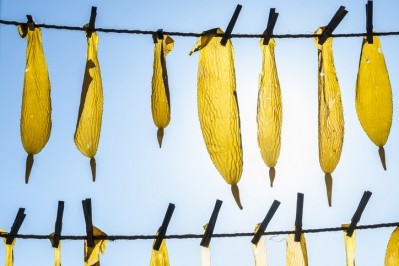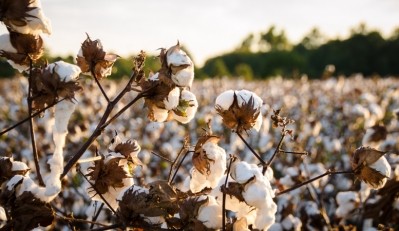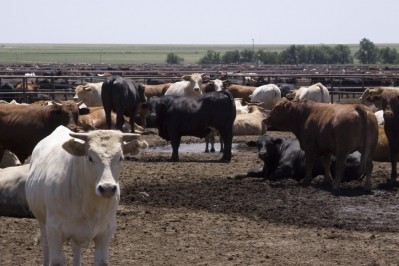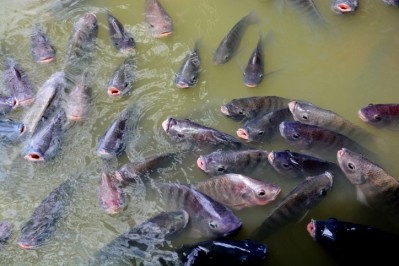Special Edition: Feed Protein Innovation
Even fish like pizza: By-product meal may drop feed price, support tilapia growth
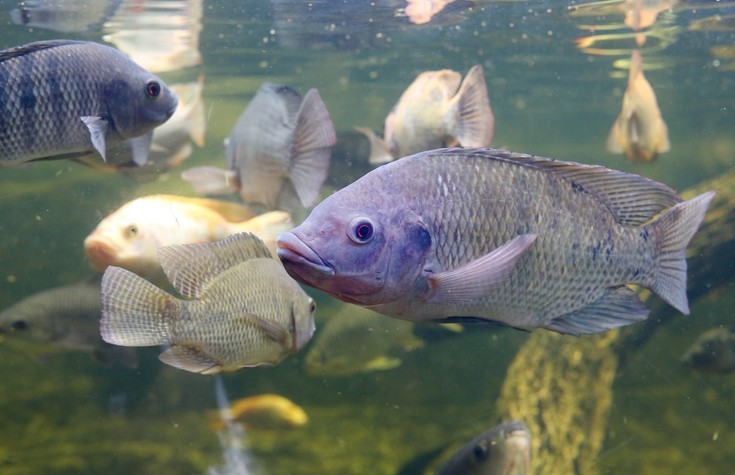
An international team of researchers from Brazil and Mexico explored the use of pizzeria by-product meal in place of a higher protein feed in the diet of Nile tilapia raised in a biofloc system.
The team published their work in the journal Aquaculture.
“The objective of this study was to evaluate the production performance of juvenile Nile tilapia (Oreochromis niloticus) reared in biofloc system fed diets containing increasing inclusion levels of pizzeria by-product meal,” the researchers said.
Adding the pizzeria by-product meal to the tilapia diets at 20% supported fish growth and development in a manner similar to the control feed, said the researchers.
Feed conversion ratios tended to be similar for fish getting the control diet and those getting feeds substituted with 20% and 40% of the by-product meal.
“Pizzeria by-product is a suitable complementary ingredient in Nile tilapia feeds reared in biofloc systems at the initial stages,” they said. “Pizzeria by-product meal was successfully included at 20% without impairing zootechnical performance and reducing feeding costs by approximately 10%.”
“However, it is important to highlight that 40% inclusion of pizzeria by-product might exhibit a strategic economic benefit to the farms that also commercialize fingerlings,” they added.
Biofloc technology
Nile tilapia are one of the most commonly raised aquaculture species globally and in Brazil, the researchers said. The fish can survive in different rearing systems, is adaptable to conditions and grows quickly.
Tilapia in Brazil are often raised in ponds and cages. However, such production systems sometimes lead to environmental challenges including generation of effluents, pathogen outbreaks and pollution generated from feed and fecal matter, they said.
Using biofloc technology may improve biosafety and sustainability for fish production, they said. The plankton generate aid in nutrient cycling, water quality maintenance and compete with pathogens.
“This system has the principle of inducing the growth of the planktonic community though the manipulation of the water carbon: nitrogen ratio (C: N), with the addition of an external source of carbon, besides a minimum or no water exchange, constant aeration and movement in the water and high stocking densities,” the researchers said.
Past researchers have noted that raising tilapia in a biofloc system also tends to improve the feed conversion ratio (FCR) and that less protein is needed in feeds, they said.
“Considering that feeding costs in an intensive fish farm may reach up to 70% of the production costs (Guimarães et al., 2008) the bioflocs system is an alternative of reducing such costs."
Another way to address feed costs is using alternative ingredients when formulating feeds – like yeast, mango residue meal, fish by-product, cassava sweep meal and cotton meal, they said.
Tilapia also have the ability to use dietary carbohydrates as an energy source.
“Capability to use dietary carbohydrates increases with life stage ranging from 30 to 70% of diet (Tung and Shiau, 1993; FAO, 2018),” they said. “For example, Nile tilapia is able to adapt some hepatic enzymes to cope with different dietary carbohydrates.”
Protein sparing effect
Carbohydrates use could be strategic in tilapia feed to promote a protein-sparing effect, they added.
“Pizzeria by-product may also become a promising complementary ingredient to be used in local aqua feed formulations, especially for species with a good capacity of digesting carbohydrates, such as tilapia,” the researchers said.
“Its utilization is attractive due to the high and constant availability and low cost. Additionally, it is estimated that in the southern region of the Santa Catarina State (Brazil) the availability of this by-product may overcome 10 tons per week.”
There could be global variation on the availability of the potential feed ingredient though, they recognized.
Methods and materials
In the feeding trial, 288 juvenile tilapia were given one of six diets for a period of 38 days, the researchers said. Prior to the start of the feeding period, a biofloc inoculum was added to fish tanks.
The diets included a control diet based on a commercial feed with 28% crude protein (CP) and that feed with increasing amounts of pizzeria by-product meal at 0, 20, 40, 60, 80 and 100% replacement, they said.
The by-product used was collected from a series of restaurants, dried and milled before use and all feed ingredients were pelleted prior to feeding.
“In order to prepare the experimental diets, the sieved commercial feed and the pizzeria by-product meal were weighted and blended in distinct portions, according to the previously designed dietary treatments (0% or control, 20, 40, 60, 80 and 100% pizzeria waste),” the researchers said.
At the end of the feeding period, all fish were weighed and evaluated for final weight, feed conversion ratio, specific growth rate (SGR), survival and productivity, they said.
Fish also were checked for total length, condition factor, hepatosomatic index, carcass elements and carcass yield.
Samples of the microorganisms present in the production systems were collected throughout the feeding trial, they said.
The influence of the alternative feed ingredient on feed cost, feed consumption and total feed cost per 1,000 fish was also calculated.
Results
Overall, weight gain, biomass gain, productivity, total length, condition factor and SGR tended to decline as more of the pizzeria by-product meal was added to fish diets, the researchers said.
Survival rates were similar for fish on all diets.
“However, it is important to highlight that fish fed the diet with 20% inclusion level presented equivalent performance to those fed the control diet (0% inclusion),” they said. “Additionally, up to 60% inclusion of pizzeria by-product did not affect FCR, but more aggressive replacement (80 and 100% diets) significantly increased FCR.”
Carcass yield was not altered by diet, they said. However the hepatosomatic index increased when higher levels of the alternative feed ingredient were used.
Feeds using 100% pizzeria by-product meal provided the most economic results, however, including the meal at more than 40% inclusion limited fish performance, the researchers said.
“Based on the economic analysis as the inclusion level of pizzeria by-product increased the feed costs and fish performance decreased,” they added.
The diets altered whole body results for the fish, they said. Protein content fell as more by-product was used, until 100% was added and lipid amount increased up to 60% inclusion.
“It is possible to successfully include up to 20% of pizzeria by-product meal in diets for Nile tilapia reared in biofloc systems, and 40% inclusion of pizzeria by-product might exhibit a strategic economic benefit to the farms that also commercialize fingerlings,” they said.
Also during the feeding trial, seven taxa of planktonic organisms were noted in the bioflocs, they said.
Source: Aquaculture
DOI: https://doi.org/10.1016/j.aquaculture.2018.11.055
Title: Pizzeria by-product: A complementary feed source for Nile tilapia (Oreochromis niloticus) raised in biofloc technology?
Authors: A. de Sousa, S. Pinho, A. Rombenso, G. de Mello, M. Emerenciano
